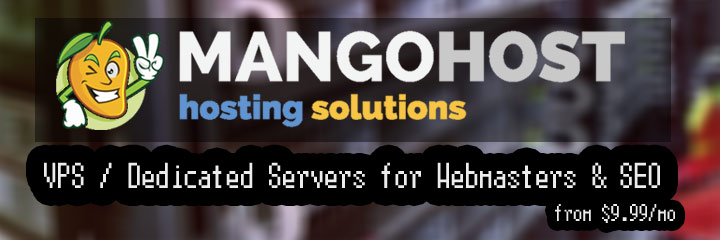
 Get the solution ↓↓↓
Get the solution ↓↓↓
The VichUploaderBundle does the upload handling in a doctrine event listener using the prePersist and preUpdate hooks. The problem in your case is, that - from doctrines point of view - no persistent property has changed. Since there is no change, the upload listener won't be called.
A simple workaround is to always change a persistent property when a file was uploaded. I addedupdatedAt to your entity and the methodupdateLogo to keep the required change oflogoFile andupdatedAt together.
final class Organization
{
(...)
/**
* @ApiProperty(iri="http://schema.org/logo")
* @Groups({"organization:collection:get", "logo:post"})
* @ORM\Column(nullable=true)
*/
public ?string $logoPath = null;
/**
* @ORM\Column(type="datetime")
*/
private ?DateTime $updatedAt = null;
/**
* @var File|null
*
* @Assert\NotNull(groups={"logo_create"})
* @Vich\UploadableField(mapping="logo", fileNameProperty="logoPath")
*/
private ?File $logoFile = null;
(...)
public function updateLogo(File $logo): void
{
$this->logoFile = $logo;
$this->updatedAt = new DateTime();
}
}
final class CreateOrganizationLogoAction extends AbstractController
{
(...)
/**
* @param Request $request
*
* @return EntityOrganization
*/
public function __invoke(Request $request): EntityOrganization
{
$uploadedFile = $request->files->get('logoFile');
if (!$uploadedFile) {
throw new BadRequestHttpException('"file" is required');
}
$organization = $this->repository->find(Uuid::fromString($request->attributes->get('id')));
$organization->updateLogo($uploadedFile);
return $organization;
}
}
I am currently working on a project which allow users to upload media files.
I have discarded the Vich bundle. Api-platform is application/ld+json oriented.
Instead, i let the user provide a base64-encoded content file (i.e a string representation with readable characters only).
The only counterpart i got is that the file size is increased by ~30% during http transfer. Honestly, it does not matter.
I suggest you to do something like the code below.
OrganizationController --use--> Organization 1 <>---> 0..1 ImageObject
The logo (note the assertion on the $encodingFormat property):
<?php
declare(strict_types=1);
namespace App\Entity;
use ApiPlatform\Core\Annotation\ApiProperty;
use ApiPlatform\Core\Annotation\ApiResource;
use Doctrine\ORM\Mapping as ORM;
use Symfony\Component\Serializer\Annotation\Groups;
use Symfony\Component\Validator\Constraints as Assert;
/**
* An image file.
*
* @see http://schema.org/ImageObject Documentation on Schema.org
*
* @ORM\Entity
* @ApiResource(
* iri="http://schema.org/ImageObject",
* normalizationContext={"groups" = {"imageobject:get"}}
* collectionOperations={"get"},
* itemOperations={"get"}
* )
*/
class ImageObject
{
/**
* @var int|null
*
* @ORM\Id
* @ORM\GeneratedValue(strategy="AUTO")
* @ORM\Column(type="integer")
* @Groups({"imageobject:get"})
*/
private $id;
/**
* @var string|null the name of the item
*
* @ORM\Column(type="text", nullable=true)
* @ApiProperty(iri="http://schema.org/name")
* @Groups({"imageobject:get"})
*/
private $name;
/**
* @var string|null actual bytes of the media object, for example the image file or video file
*
* @ORM\Column(type="text", nullable=true)
* @ApiProperty(iri="http://schema.org/contentUrl")
* @Groups({"imageobject:get"})
*/
private $contentUrl;
/**
* @var string|null mp3, mpeg4, etc
*
* @Assert\Regex("#^image/.*$#", message="This is not an image, this is a {{ value }} file.")
* @ORM\Column(type="text", nullable=true)
* @ApiProperty(iri="http://schema.org/encodingFormat")
* @Groups({"imageobject:get"})
*/
private $encodingFormat;
// getters and setters, nothing specific here
Your stripped Organization class, which declare the OrganizationController:
<?php
namespace App\Entity;
use ApiPlatform\Core\Annotation\ApiResource;
use App\Repository\OrganizationRepository;
use Doctrine\ORM\Mapping as ORM;
use Symfony\Component\Serializer\Annotation\Groups;
use Symfony\Component\Validator\Constraints as Assert;
use App\Controller\OrganizationController;
/**
* @ApiResource(
* normalizationContext={
"groups" = {"organization:get"}
* },
* denormalizationContext={
"groups" = {"organization:post"}
* },
* collectionOperations={
"get",
* "post" = {
* "controller" = OrganizationController::class
* }
* }
* )
* @ORM\Entity(repositoryClass=OrganizationRepository::class)
*/
class Organization
{
/**
* @ORM\Id()
* @ORM\GeneratedValue()
* @ORM\Column(type="integer")
* @Groups({"organization:get"})
*/
private $id;
/**
* @var string
* @ORM\Column(type="string", length=100, unique=true)
* @Groups({"organization:get", "organization:post"})
*/
private $slug;
/**
* @var null|ImageObject
* @Assert\Valid()
* @ORM\OneToOne(targetEntity=ImageObject::class, cascade={"persist", "remove"})
* @Groups({"organization:get"})
*/
private $logo;
/**
* @var string the logo BLOB, base64-encoded, without line separators.
* @Groups({"organization:post"})
*/
private $b64LogoContent;
// getters and setters, nothing specific here...
}
Note the serialization groups of both $logo and $b64LogoContent properties.
Then the controller (action class), in order to decode, assign and write the logo content.
<?php
namespace App\Controller;
use App\Entity\ImageObject;
use App\Entity\Organization;
use finfo;
/**
* Handle the base64-encoded logo content.
*/
class OrganizationController
{
public function __invoke(Organization $data)
{
$b64LogoContent = $data->getB64LogoContent();
if (! empty($b64LogoContent)) {
$logo = $this->buildAndWriteLogo($b64LogoContent);
$data->setLogo($logo);
}
return $data;
}
private function buildAndWriteLogo(string $b64LogoContent): ImageObject
{
$logo = new ImageObject();
$content = str_replace("\n", "", base64_decode($b64LogoContent));
$mimeType = (new finfo())->buffer($content, FILEINFO_MIME_TYPE);
$autoGeneratedId = $this->createFileName($content, $mimeType); // Or anything to generate an ID, like md5sum
$logo->setName($autoGeneratedId);
$logo->setContentUrl("/public/images/logo/$autoGeneratedId");
$logo->setEncodingFormat($mimeType);
// check the directory permissions!
// writing the file should be done after data validation
file_put_contents("images/logo/$autoGeneratedId", $content);
return $logo;
}
private function createFileName(string $content, string $mimeType): string
{
if (strpos($mimeType, "image/") === 0) {
$extension = explode('/', $mimeType)[1];
} else {
$extension = "txt";
}
return time() . ".$extension";
}
}
It checks whether the supplied logo is a "tiny image" with @Assert annotations of the ImageObject class (encodingFormat, width, height etc.), they are triggered by the @Assert\Valid annotation of the Organization::$logo property.
With that, you can create an organization with its logo by sending a single HTTP POST /organizations request.
Our community is visited by hundreds of web development professionals every day. Ask your question and get a quick answer for free.
Find the answer in similar questions on our website.
Do you know the answer to this question? Write a quick response to it. With your help, we will make our community stronger.
PHP (from the English Hypertext Preprocessor - hypertext preprocessor) is a scripting programming language for developing web applications. Supported by most hosting providers, it is one of the most popular tools for creating dynamic websites.
The PHP scripting language has gained wide popularity due to its processing speed, simplicity, cross-platform, functionality and distribution of source codes under its own license.
https://www.php.net/
Symfony compares favorably with other PHP frameworks in terms of reliability and maturity. This framework appeared a long time ago, in 2005, that is, it has existed much longer than most of the other tools we are considering. It is popular for its web standards compliance and PHP design patterns.
https://symfony.com/

Welcome to the Q&A site for web developers. Here you can ask a question about the problem you are facing and get answers from other experts. We have created a user-friendly interface so that you can quickly and free of charge ask a question about a web programming problem. We also invite other experts to join our community and help other members who ask questions. In addition, you can use our search for questions with a solution.
Ask about the real problem you are facing. Describe in detail what you are doing and what you want to achieve.
Our goal is to create a strong community in which everyone will support each other. If you find a question and know the answer to it, help others with your knowledge.